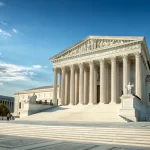An investigation has found that Deloitte cited research that did not exist in a 526-page report, raising questions about quality controls at one of the world’s largest consulting firms. The finding puts a spotlight on how major reports are compiled and reviewed, and why accurate sourcing matters for clients, policymakers, and the public.
The report’s scale and stated ambition gave it weight. But investigators say parts of its evidence base were faulty. The issue now is not only the mistakes themselves, but how they were allowed into such a lengthy document.
“An investigation found that Deloitte cited research that didn’t exist in the 526-page report.”
Why sourcing in major reports matters
Large consulting reports often guide decisions worth millions of dollars. Governments use them to shape policy. Corporations use them to plan strategy and spending. When sources are inaccurate, the ripple effects can be wide.
Consultancies typically rely on a mix of public data, client materials, academic studies, and proprietary analysis. Errors can enter the process if citations are not verified, if drafts are rushed, or if teams rely on summaries rather than original texts. The longer the document, the higher the risk of a missed check.
In recent years, questions about research rigor have surfaced across industries, from think tanks to agencies and private firms. This case adds urgency to calls for better documentation and auditing of sources.
What investigators say was wrong
The core claim is simple and serious: some of the research cited as evidence did not exist. That suggests either mislabeling of sources, incorrect references, or fabricated titles.
Such problems can lead readers to assume support that is not there. If found in sections with key claims, the errors can affect trust in the entire document.
- Length: 526 pages, which increases the need for careful review.
- Issue: Citations to research that could not be verified as real.
- Risk: Decisions based on unsupported findings.
How this could affect clients and the firm
Clients who relied on the report may revisit decisions or seek clarifications. If policies or budgets were tied to the report’s findings, leaders may want independent validation. Investors and boards often ask for source lists and audit trails when credibility is at stake.
For Deloitte, the findings could prompt internal reviews. Firms often update editorial standards, add citation checks, or bring in third parties for audits after such incidents. Transparent correction processes can help restore trust.
Experts call for stronger checks
Research and policy specialists say the fix is straightforward but requires discipline. Every cited source should be traceable, accessible, and reviewed by at least one person who did not write the section.
Several common safeguards are used across high-stakes publications:
- Require a direct link or archive copy for each citation.
- Maintain a cross-check log showing who verified each source and when.
- Use reference management tools with duplicate and invalid link detection.
- Run a final “source audit” before publication.
These steps do not add heavy cost compared with the price of reputational damage. They also help catch broken links and mislabeled data tables, which are frequent causes of confusion.
What to watch next
Key questions remain. Will Deloitte issue corrections or an updated report? Will it explain how many citations were affected and where they appear? Will clients be notified of changes to the report’s conclusions?
The answers matter not only for this case, but for the consulting industry more broadly. Clear standards for verification can set expectations for future work and improve public confidence in expert reports.
For readers and decision-makers, the takeaway is practical. Treat citations as claims that must be testable. Ask for the source list. Request the methodology. And when a report runs hundreds of pages, insist on a summary of verification steps.
The immediate issue is the alleged use of non-existent sources. The larger lesson is about diligence. Strong verification protects clients, supports good policy, and preserves trust in expert analysis. Watch for any corrections, an explanation of quality controls, and whether independent auditors review the document’s evidence base.







